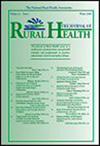Mapping maternity care deserts: Driving distance and health outcomes in North Carolina
Abstract
Objective
This study evaluated the association between maternal care deserts (MCDs)—defined by accessibility measures such as travel time and distance to obstetric and gynecological care—and maternal and infant health outcomes in North Carolina from 2016 to 2021.
Methods
This was a retrospective secondary data analysis examining residents of North Carolina from 2016 to 2021, using travel metrics from residential zip codes to the nearest clinical providers. Maternal and infant health outcomes were assessed using data from the National Plan and Provider Enumeration System (NPPES) from the Centers for Medicare & Medicaid Services (CMS) and inpatient hospitalization records for North Carolina. Outcomes of interest included cesarean delivery rates, severe maternal morbidity (SMM20 and SMM21), and hypertension, which were examined across rural-urban disparities based on RUCA codes. Statistical analyses were conducted to link travel metrics with health outcomes, adjusting for age, race, and insurance status to control for potential confounding factors.
Results
The study found that rural and low-income areas in North Carolina had fewer health care providers. Increased travel times and distances to clinical care were associated with higher cesarean delivery rates, increased severe maternal morbidity, preterm birth, and higher rates of gestational diabetes. These associations remained significant even after adjusting for age, race, and insurance status.
Conclusion
Women living in maternal care deserts in North Carolina, often in rural locations, are more likely to experience adverse health outcomes, including severe maternal morbidity and hypertension, likely due to limited access to essential obstetric and gynecological care. These findings highlight the negative impact of health care inaccessibility on maternal and infant health in underserved regions.


 求助内容:
求助内容: 应助结果提醒方式:
应助结果提醒方式:


